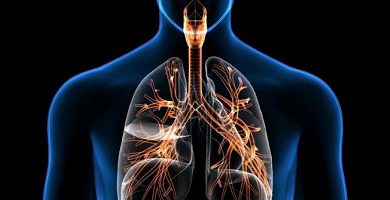Types Of Corrosion With Definition And Examples From Everyday Life
We explain what corrosion is and what types of corrosion exist. Examples and how to avoid it. Also, relationship between corrosion and oxidation.
-
What is corrosion?
Corrosion is the process of degradation of certain materials, as a consequence of an electrochemical reaction , that is, of oxide-reduction , from their environment.
It is a natural , spontaneous phenomenon that affects mainly (but not exclusively) metals . The speed of the reaction depends on the temperature at which it occurs, as well as the properties of the elements involved, especially their salinity.
Corrosion is a chemical process in which three factors usually intervene: the corroded element, the environment and generally water . However, there are also corrosive substances, that is, capable of causing corrosion of the materials with which they come into direct contact.
For its part, the metallurgical industry studies corrosion as an important enemy to overcome by its products, especially those exposed to the environment, in architectural or construction pieces. In fact, it is estimated that approximately five tons of steel are lost every few seconds worldwide due to corrosion.
-
Types of corrosion
Broadly speaking, there are two types of corrosion: chemical and electrochemical, depending on the type of materials and reactions involved:
Chemical corrosion . It occurs when a material reacts in a corrosive liquid or gas, until completely dissolved or saturated. This can happen in different ways, such as:
- Liquid metal attack , that is, when one metal and another liquid metal come into contact, and the former is corroded at its weak points by the latter.
- Selective leaching , which is nothing more than selective corrosion on metal alloys.
- Chemical attack , that is, aggressive chemical reactions by powerful solvents, such as those capable of dissolving polymers , generally considered resistant to corrosion.
Electrochemical corrosion . It generally occurs in metals, when their atoms lose electrons and become ions , and can occur in different ways, such as:
- Microbiological corrosion , when caused by living microscopic organisms capable of altering the chemistry of materials, such as bacteria , algae and fungi.
- Galvanic corrosion , the most intense of all, occurs when different metals interact with each other, one acting as an anode and the other as a cathode, forming what is known as a galvanic cell.
- Corrosion by surface aeration , known as the Evans Effect, occurs on flat surfaces located in humid and dirty places, which favor electronegatively charged environments.
-
Examples of corrosion in everyday life

Some examples of corrosion extracted from everyday life are:
- Corrosion of water pipes , especially metallic ones, which tend to break over time, if not to contaminate the water with small doses of oxide, giving it a blackish or brown color.
- Rust on metals exposed to water , such as the sheet metal of the automatic washing machine, or the doors of cars left on the beach, where the salty environment accelerates the oxidative reaction and soon there are fissures and the typical brown spots of rust.
- The color of the Statue of Liberty , because its original tone should not be greenish, but copper , the material from which it is made. But being surrounded by water, the humidity of the air oxidizes it and covers it with a greenish powder (copper oxide), the result of corrosion.
- Corrosion of canning cans , such as those that have been in the pantry too long, and begin to show brown spots in some regions, an unmistakable sign that air corrosion has begun to affect them.
-
How to avoid corrosion?
The fight against corrosion is part of the metal industries, which have various mechanisms to avoid, or at least slow down, these metal disintegrating processes, such as:
- Coatings . Many metals are coated with polymers or plastics , for example, to avoid or minimize environmental corrosion, isolating them from their environment in a substance more resistant to this type of reaction.
- Alloys . Many metal combinations give the result a greater resistance to corrosion, as occurs with zinc alloy steels.
- Corrosion inhibitors . These are chemical substances that have the property of slowing down or preventing the natural process of corrosion of certain materials, so it is enough to immerse them in a film of them to make them more resistant.
- Choice of materials . The simplest solution is to choose well which materials to leave exposed to the environment and which not, and which to use for works exposed to the elements or to the action of water, for example.
-
Corrosion and oxidation
Although it is often not named that way, oxidation is a reaction of corrosion , since in every act of oxidation an electronic exchange occurs, classifiable as electrochemical corrosion.
For this reason, metals left out in the open or submerged in water corrode, as they react with oxygen in the air or water and form oxide layers on their surface, which prevent the chemical reaction from advancing.
However, this oxide layer is mechanically removed and the deeper layers of the metal are exposed to oxygen again, resulting in complete destruction of the material. This process is particularly fast in saline environments, since sodium chloride acts as a catalyst for the reaction, speeding it up.





